
Piercing the veil
A new exhibition at Buxton Contemporary finds a rich complexity in the shadowy terrain between life and death.
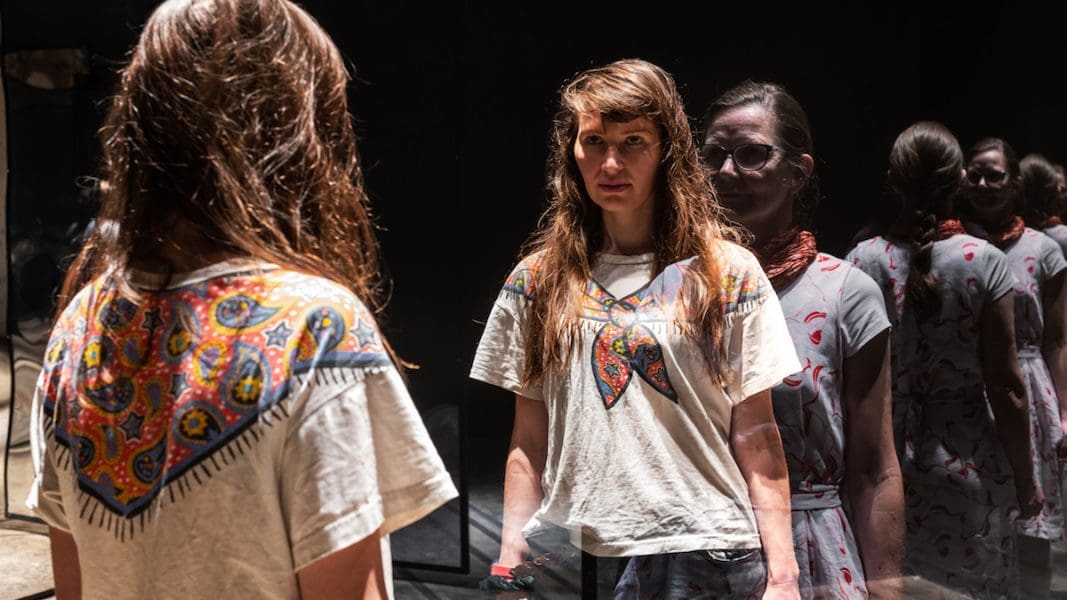
Giselle Stanborough, Cinopticon, 2020, Carriageworks. Image: Mark Pokorny.
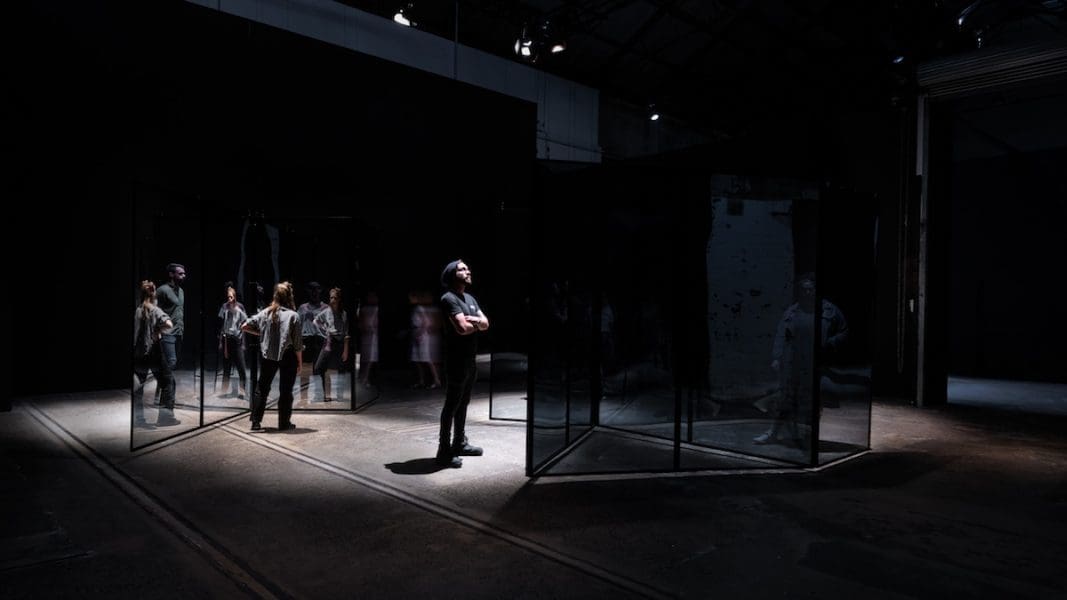
Giselle Stanborough, Cinopticon, 2020, Carriageworks. Image: Mark Pokorny.
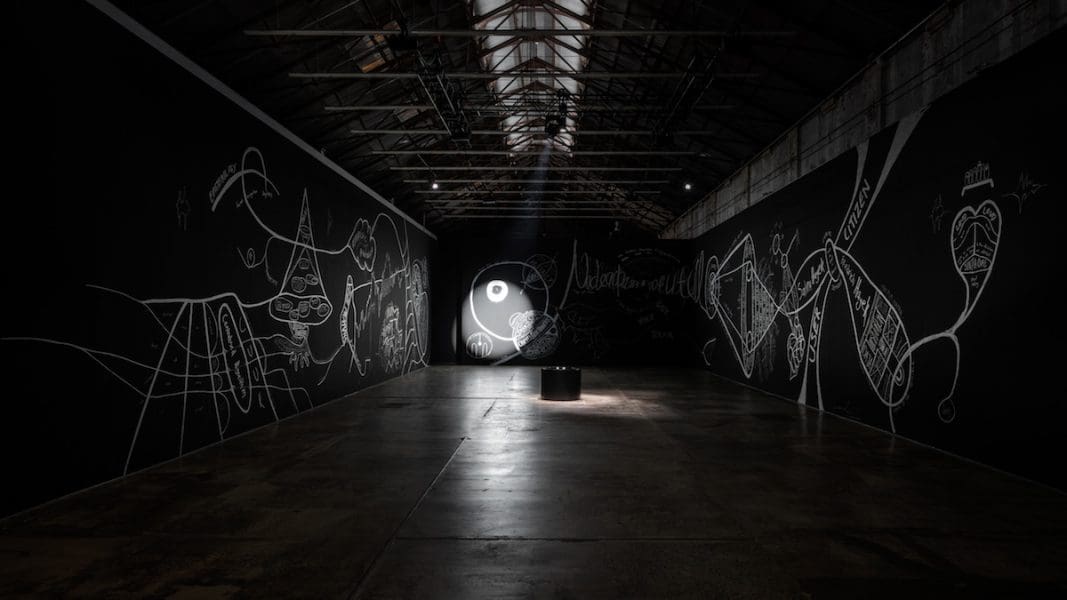
Giselle Stanborough, Cinopticon, 2020, Carriageworks. Image: Mark Pokorny.
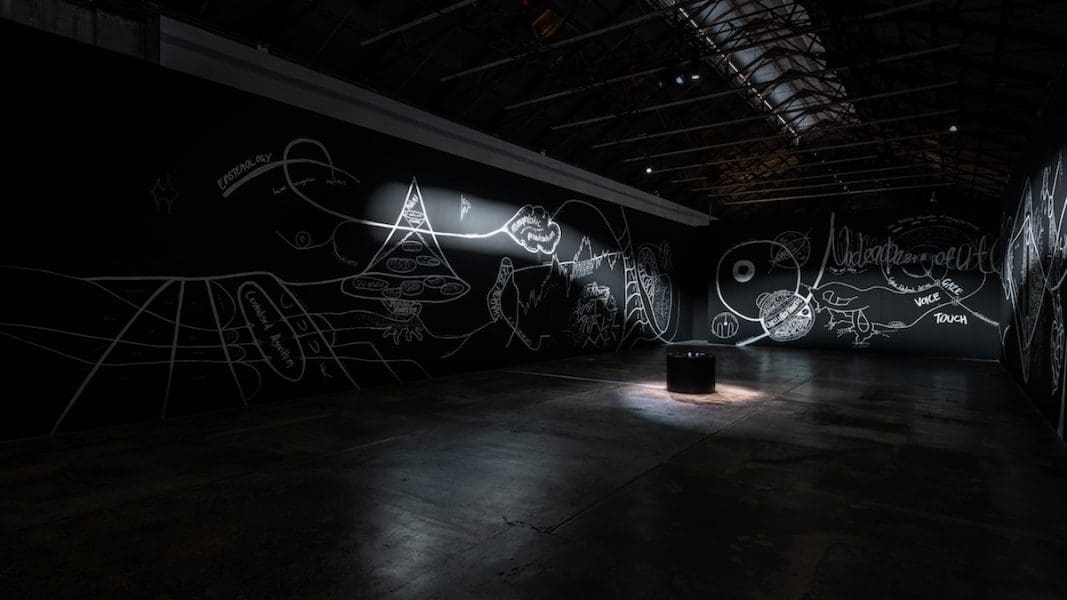
Giselle Stanborough, Cinopticon, 2020, Carriageworks. Image: Mark Pokorny.
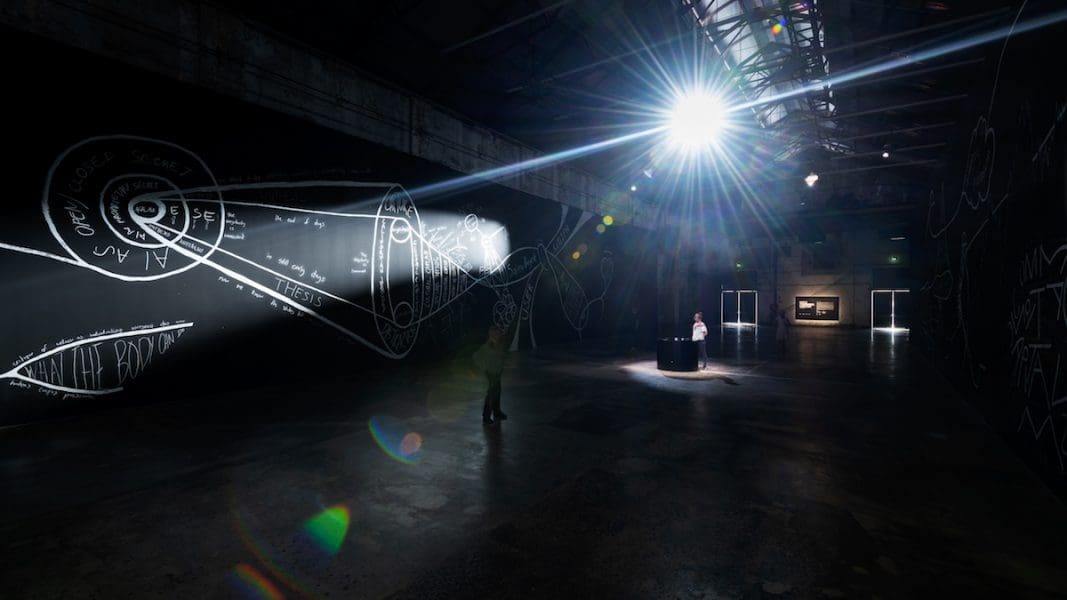
Giselle Stanborough, Cinopticon, 2020, Carriageworks. Image: Mark Pokorny.
Giselle Stanborough’s Cinopticon was relevant well before the current pandemic crisis. But as our personal and professional lives are moving online rapidly and more comprehensively than ever, Stanborough’s research takes on a kind of chilling urgency. Cinopticon is one of three commissions for Suspended Moment: The Katthy Cavaliere Fellowship, which saw three female artists each awarded $100,000 commissions to create an ambitious new work for exhibition. Rebecca Gallo spoke to the artist about the invisible structures are we participating in when we post online, the kinds of capital that are accumulating, and who benefits.
Rebecca Gallo: In previous work, you’ve looked at the way that dating apps and reality TV have changed the way we interact with and represent ourselves to each other. How has your thinking evolved on the ways that technology is shaping human relationships?
Giselle Stanborough: My earlier work was more participatory, frivolous and playful. I think this broadly reflects everyone’s attitude to what the internet was and what it could be: everyone was pretty sanguine in the early days.
Then as the structures of the internet became more and more ingrained in so many aspects of our lives, it got a little bit more real. With my work that involved internet dating, there was a sense that through moving these online, commercial, horrible, objectifying technologies into the gallery space, we could engage with the kinds of promises that art makes about intersubjectivity. I had this idea that it really could be a way to bring people together, and have conversations that I might never have had otherwise. I wanted to break down the filter bubbles.
Cinopticon is much darker. I’m also not using the technologies, or the aesthetics of those technologies in and of themselves to talk about technology. Instead, there’s a strong element of hand drawing, and the body in space is an important element.

RG: Can you describe how these elements play out in Cinopticon?
GS: Across all of the six-metre-high walls of the main space, there are painted diagrams that might look like manic conspiratorial diagramming processes, but they look at online surveillance practices, user generated things, and all sorts of technologies. The diagrams analyse these elements through a political or psychoanalytic frame.
Then there is a roving searchlight that moves through the space, over the walls and the floor. It choreographs the drawing, highlighting parts. The searchlight is the motif of 20th-century modalities of government control that you would associate with Stalinism or the Gestapo. It’s the idea of the eye of surveillance, an ominous emblem of control.
In the middle gallery is an installation of two-way mirrors, and they change in unpredictable ways between mirrored and window surface through light modulation. You’re looking at yourself, and all of a sudden you might see another audience member, or perhaps nothing at all. There are a number of other video, audio and installation elements throughout the spaces, including a well and a video screen with mirrored sections.
RG: Would you say Cinopticon is more about our relationships with others, with technology, or with ourselves?
GS: An important element of this work is trying to think through these technologies, and analyse them psychoanalytically. Lacan is a touchpoint in the show, thinking about the ways that our self-recognitions are also our self-misrecognitions. In becoming who we are, through the structures of language – including images, and social media – we are also alienated from ourselves. The work is also thinking about an idea of a cyber-libidinal drive, with our repetition compulsion.
When we think about selfhood and each other, there are parts of us and our motivations that we do not have conscious access to. But the idea of psychoanalysis is that through analysis, these motivations can come out in signification, in the surface of what we say and do that we’re not even aware of.
The people that are analysing and have access to that material view us only as markets, and have vested interests in finding out those things that we don’t know we are motivated by, and serving us ads that classify us and lock us down. We see that classification, and say, yes, of course that’s who we are.

RG: What role do you think art can or should have in an age of mass online corporate surveillance of individuals?
GS: What I am interested in when it comes to art is yes, its political possibilities, which often do rely on a certain legibility, the artist’s ‘message’ or whatever, but I believe its potentiality surpasses this, and the best encounters with art contain something irreducible and indeterminate, and this extra, always necessarily ineffable, is what makes it art at all and not some other thing.
RG: In a recent Instagram post you said you hope you make Katthy proud. Could you expand a bit on your feelings towards Katthy and the fellowship?
GS: I feel a deep affinity with Katthy and her work, which often worked at the contours of what is private and what is public, and this has been an ongoing concern in my own practice.
Katthy was an immensely talented artist who passed away too young. I have been thinking about this a lot over the past few days with things as they are, pandemic-wise. The fellowship is a show to honour a life taken too soon, and if Katthy was alive, and sick now, she would be incredibly vulnerable.
At the end of the day, there is more to life than contemporary art. There is life itself and that is where Katthy drew her inspiration, as I draw mine, just from being in the world when I am and thinking about what kind of world that is, and could be.
Cinopticon
Giselle Stanborough
Carriageworks
7 August – 26 September 2020
Carriageworks is currently open, and is ensuring the safety of visitors, artists and staff through a COVID-19 safety management plan. All visitors are required to provide contact information at entry to enable contact tracing. More information here.